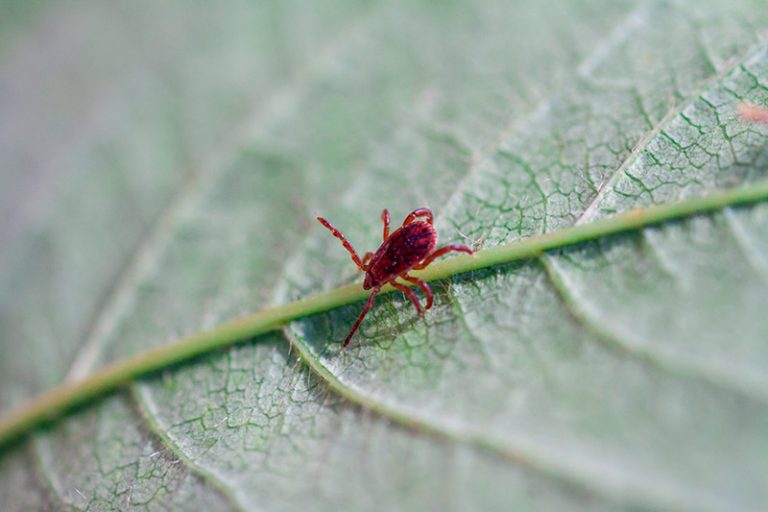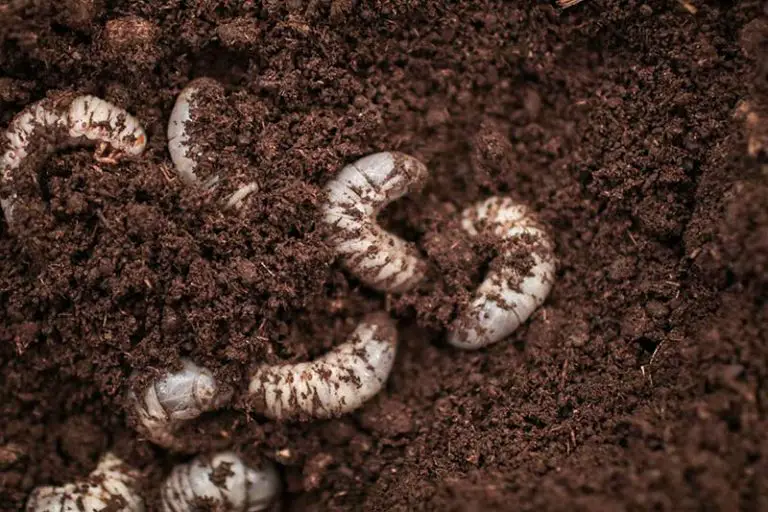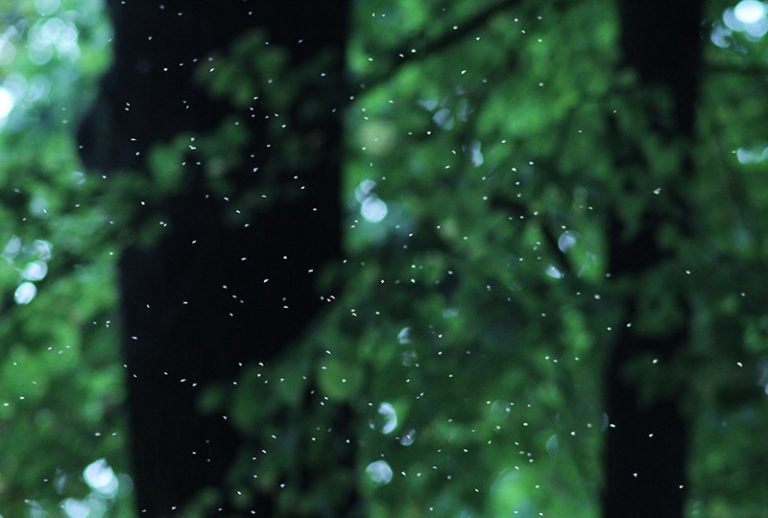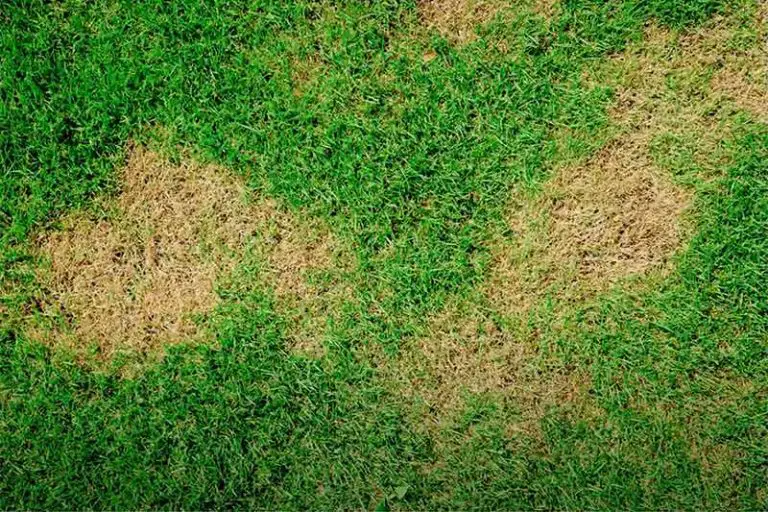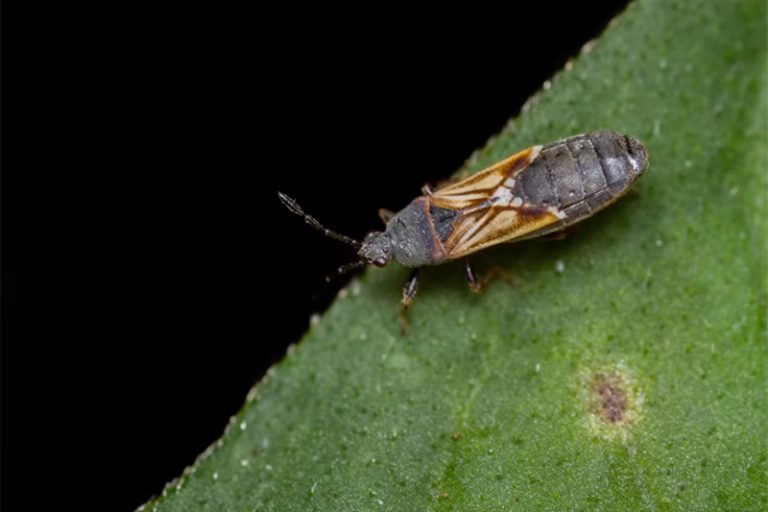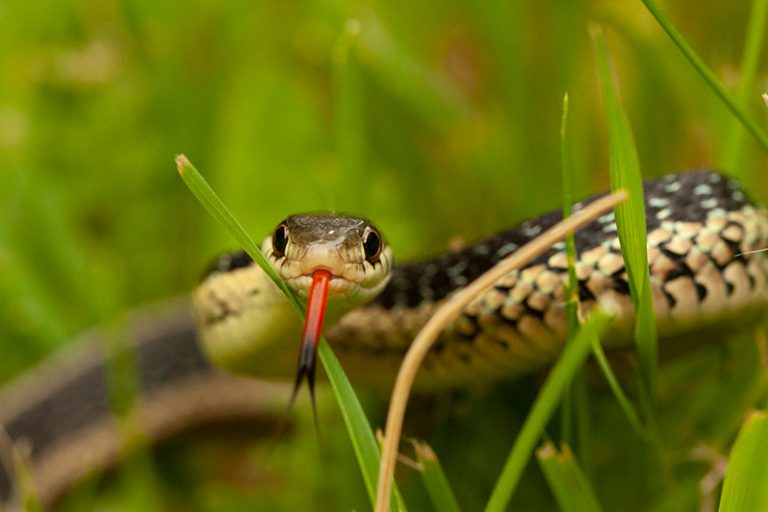How To Get Rid Of Moles In Your Yard & Garden
You look out at your yard with all the beautiful plants, and that’s when you see it; a big volcano-shaped dirt heap that spells trouble for your yard. At first, you get worried and look through your whole yard; seeing only the one molehill, you calm down and think maybe the poor little guy is lost. The next day your panic takes on new heights as you find a few more molehills. Concerned that your beautiful garden will turn into a construction site, you wonder how to get rid of moles in your yard and garden?
Moles are sensitive to smell, and one of the best humane ways to get rid of moles is to use a mole repellent that contains castor oil as a base ingredient. You can also get rid of their food source; grubs and insects. It will deter them as they love well-stocked gardens.
It happened to me not too long ago, and I had a hard time getting rid of the moles. My yard looked more like a molehill city than the beautiful garden it was. However, my yard did have a happy ending, and I thought I would share the information that helped me get rid of my mole problem.
Ridding Your Yard and Garden Of Moles
We usually want to do the right thing and get the moles out of our yard and garden without having to hurt them. Here are some unique and humane ways of getting rid of moles in your garden.
Using A Repellent To Get Rid Of Moles In Your Garden
One of the main methods of getting moles out of your yard and keeping them out is to use castor oil repellents. Castor oil won’t kill them; it only upsets their digestive tract, and it makes your yard unappealing to moles.
Castor oil seeps into the ground fast. It gets all over their food and into their mouths as they dig through your yard. These repellents are a good way of killing smaller pests that like to munch on your flower beds and plants. It is safe to use and will not harm your pets or children.
Repellents with castor oil can cover about ten thousand square feet of your property in no time and take care of your problem quickly. I also came across a recipe that you can use in spray cans all-around your yard and inside the molehills.
Castor Oil Repellent Recipe
Ingredients:
- 3 Parts Water
- 3 Parts Castor Oil
- 1 Part Dishwashing Soap
Directions:
Combine all the ingredients and liberally spray the areas where you see the most grubs and insects. Also, spray the repellent in and around the molehills. Repeat every week until the problem clears up and to maintain effectiveness.
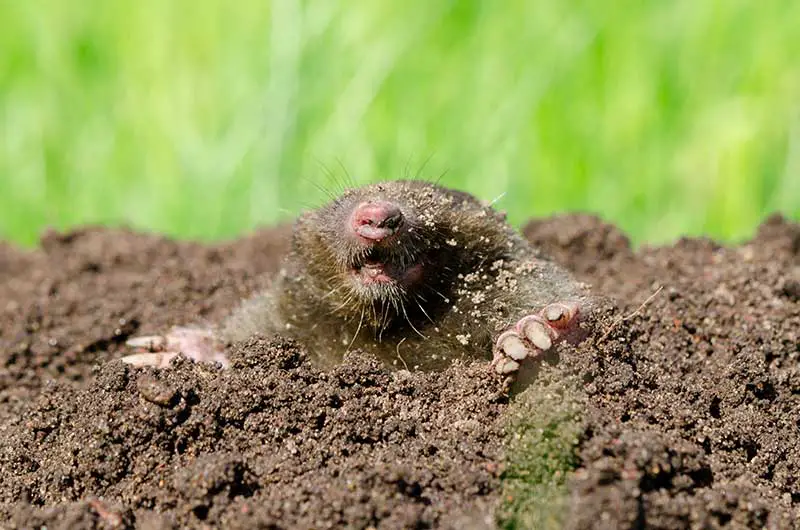
Using Traps To Get Rid Of Moles In Your Garden
Mole traps are a humane way of catching and releasing these small critters without causing harm to them. Be careful of what kind of traps you buy as some are not well made and can kill a mole instead of catching it.
The traps are cylindrical and have one-way entry points. When you put the traps into one of the tunnels, you have to cave in some of the tunnel structures and then fill the traps with soil and grubs.
That will attract the mole not only to the food but also to re-excavate the tunnels where the traps are. They will go into the traps thinking there is food, and they will feel the need to fix the caved-in tunnel, but they will be trapped.
It is a humane way of getting them away from your yard. After you have them trapped, take them as far away as possible from the residential area as you can and release them in a suitable habitat.
Using Loud Noises To Get Rid Of Moles
Moles have very sensitive ears. They have very acute hearing and don’t like any loud noises at all. This method isn’t full proof, but it will help immensely.
You can put things like wind chimes into your garden or use a radio during the day when they are less active, which will irritate them enough to leave your garden. Radios might become more of a chore to keep up, but placing wind chimes at the molehills will be the best option here.
Using Tar To Get Rid Of Moles In Your Garden
Using tar as a way to get moles to leave your yard and garden is a bit trickier to work with, but you only need to dip a few thin poles into the tar and place them into strategic places in your garden.
It would be best to place the poles into the mole’ tunneling system to help the smell travel along all the mole’s dug pathways. Please don’t spray this on your lawn or directly into your garden. It can kill the plants and make a mess. The moles despise the smell of tar and will steer clear of any smell that is that strong.
Get Rid Of Moles By Getting Rid Of Their Food Supply
While there are many ways to keep your garden relatively untouched while trying to rid your garden of moles, there is one way of ensuring that you effectively get rid of moles in your yard and garden, and it helps to keep your garden plants in better condition too. That method is to take away their food source.
Moles love the grubs and insects that, in turn, love your garden and plants. The best way to get rid of the aphids and insects is to use a powder or natural bug repellent. The bugs will die or flee from your garden, making it much less appealing to the moles. Check whether you have a grub infestation, as this could be the reason you have an issue with moles; get rid of the grubs following the guidance in our article Grubs in Lawn. If the moles have no food source, they will move onto another place that does.
Using Baits And Poisons To Get Rid Of Moles In Your Garden
Before proceeding with this step, remember that this is a lethal option. Please ensure the poison or bait is out of reach of pets or children. Ensure you cover or block off the areas in which you will be using toxins and lock the poison up after using it.
The bait looks like the worms and grubs the mole likes to eat. Put some into the molehills and the tunnels and wait. Please read the instructions carefully because if you use too much, it could affect other wildlife in the area. If they die underground, you don’t have to worry about carcass disposal.
Keep an eye on the molehills; if you see a mole that died in your garden, you need to remove the carcass immediately as pets who nibble on the carcass could get secondary poisoning, and it might prove fatal.
Calling Professionals To Remove Moles From Your Garden
If you feel you have tried all the DIY options and nothing has worked. It is time to call in the professionals. You have two choices in this case. If you want to relocate the moles, you can contact a wildlife relocation expert. They will catch the pesky moles and safely release them back into the wild, away from residential areas.
The second option is to hire an exterminator. They will find the main tunnel the mole or moles are using and either release poison into the tunnel or use lethal traps to get rid of the moles. It might sound callous, but it is probably the most effective way to rid your yard or garden of moles.
Do You Have Moles Or Voles In Your Yard
I was amazed that there is another underground dweller that makes dirt heaps. So now you have to look at the evidence and determine if you have voles or moles.


- Moles: Moles are grey to black, and they have snouts and big claws to dig underground. Moles are solitary creatures and don’t live in groups. The diet of a mole consists primarily of grubs and other insects. Moles will cause damage to the ground, but they don’t destroy your vegetation.
- Voles: Voles are usually brown, and they look more like mice. Voles have small eyes, ears, and a small nose rather than a snout. Voles are herbivores, and their diet mainly consists of vegetation like fruits, plants, grasses, and flowers.
Voles are not solitary animals and travel in groups. Voles will not only damage your grass and lawn but will eat your plants and most of the vegetation in your garden.
Why You Have Moles In Your Yard
We know moles are diggers; these tiny critters will ruin your yard in search of food. Their primary source of food is grubs, lawn insects, and earthworms. If they have invaded your yard or garden, they have found a healthy source of food.
While a healthy garden is excellent news, moles are not. Moles dig tunnels because the grubs or worms they eat are underground, and being underground also keeps them safe from predators. They don’t have good eyesight but great hearing and a keen sense of smell. Moles use vibration as a form of communication.
So if you have ample grubs and insects in your yard and garden, you have an all-you-can-eat buffet for moles.
All About Mole Tunnels And Molehills
Moles dig tunnel systems underground to hunt for food. They don’t like coming to the surface that much; their eyes are sensitive to light and their ears are very sensitive to sound. That is why they will dig tunnels to find food, and the tunnels come with molehills or mole mounds.
There are two types of tunnels that moles dig:
- Surface tunnels are long stretches of earth slightly raised with no grass on them. These long brown streeks are one form of tunnel that moles dig. It is right at the surface of the ground.
- Deep tunnels are deep underground, and moles use the molehills as entrances and exits to these deep tunnels. These tunnels go about 3 feet deep and are like tiny homes with storage places for food, sleep areas, and even designated bathrooms.
How To Keep Moles Away From Your Garden In The Future
Once your yard is blissfully mole free, here are some tips to keep them at bay in the future:
Grow Repellant Plants
Plant flowers and plants that moles can’t stand, like; Marigolds, Castor bean, Daffodils, Eucalyptus, or Mint. Castor beans are poisonous, so be careful around pets and small children. You can also plant Narcissus and The crown imperial. Moles hate the smell of these plants, and if you plant them strategically, you will deter moles from your garden.
Set Barriers
Erecting barriers around your garden is one way of keeping moles out. The barrier must be at least 30 inches deep to ensure the moles don’t dig under it. You can fence off your whole yard, but this is costly. It is best to hire professionals to put fencing around your entire yard to keep from violating building codes.
Improve Drainage
One reason moles might like your yard is because of moist soil. It makes the dirt easier to dig through, and they can smell the rich nutrient value. Making sure your garden and lawn area has a good drainage system when watering will help the soil not retain too much moisture. Not overwatering your lawn and garden by sticking to a good watering schedule will also help. Another way is to use a dry roller to compact the lawn soil, making it harder to keep in moisture and thus harder for moles to dig through.
If your lawn seems to have significant drainage issues, then you may need to grade and level it to ensure excess water is able to flow away and off your property. See our articles How to Grade a Yard and How to Level a Yard for step-by-step guidance on both of these processes.
Coffee grounds and Garlic
You can create an effective natural repellent and pesticide by sprinkling crushed garlic and coffee grounds in and around the barrier of your garden. The grubs and moles that eat them hate these smells and will steer clear.
Conclusion
Having a manicured lawn and garden is a source of joy and accomplishment, but having moles and other critters like voles destroy it is devastating. These animals can wreak havoc on your garden, but luckily there are many options to choose from to get rid of them.
If you ever feel it becomes too much of a burden or you have run out of options, you can call professionals to remove them from your yard and garden safely. In no time, you will have your beautiful yard and garden you worked so hard for back, and you can implement prevention methods to keep them away.

